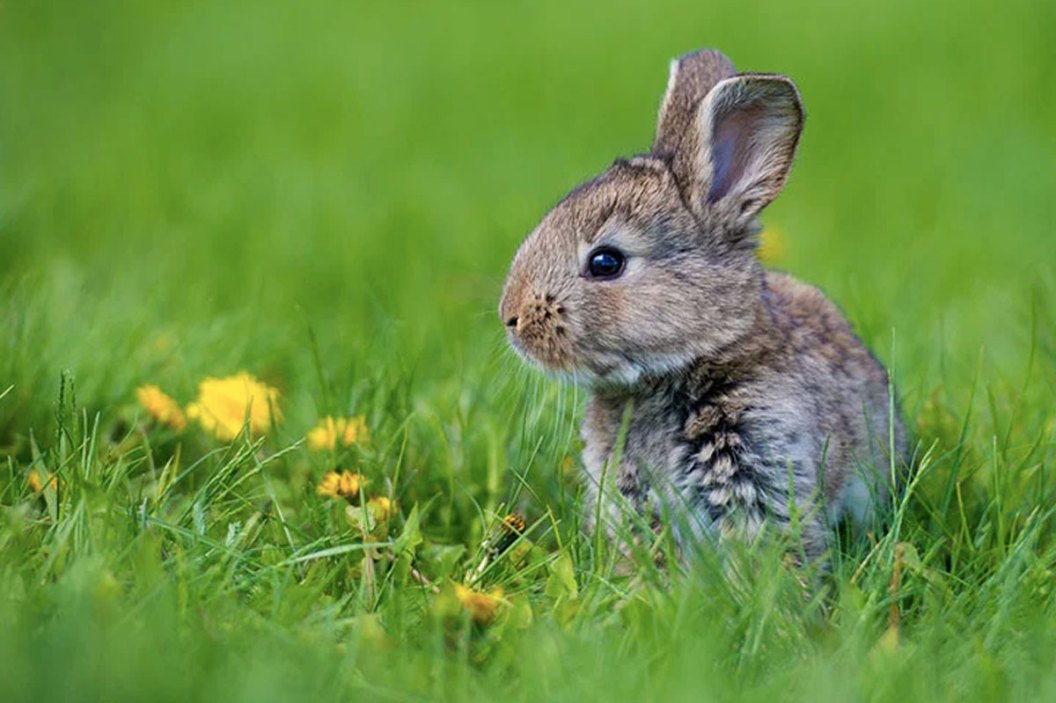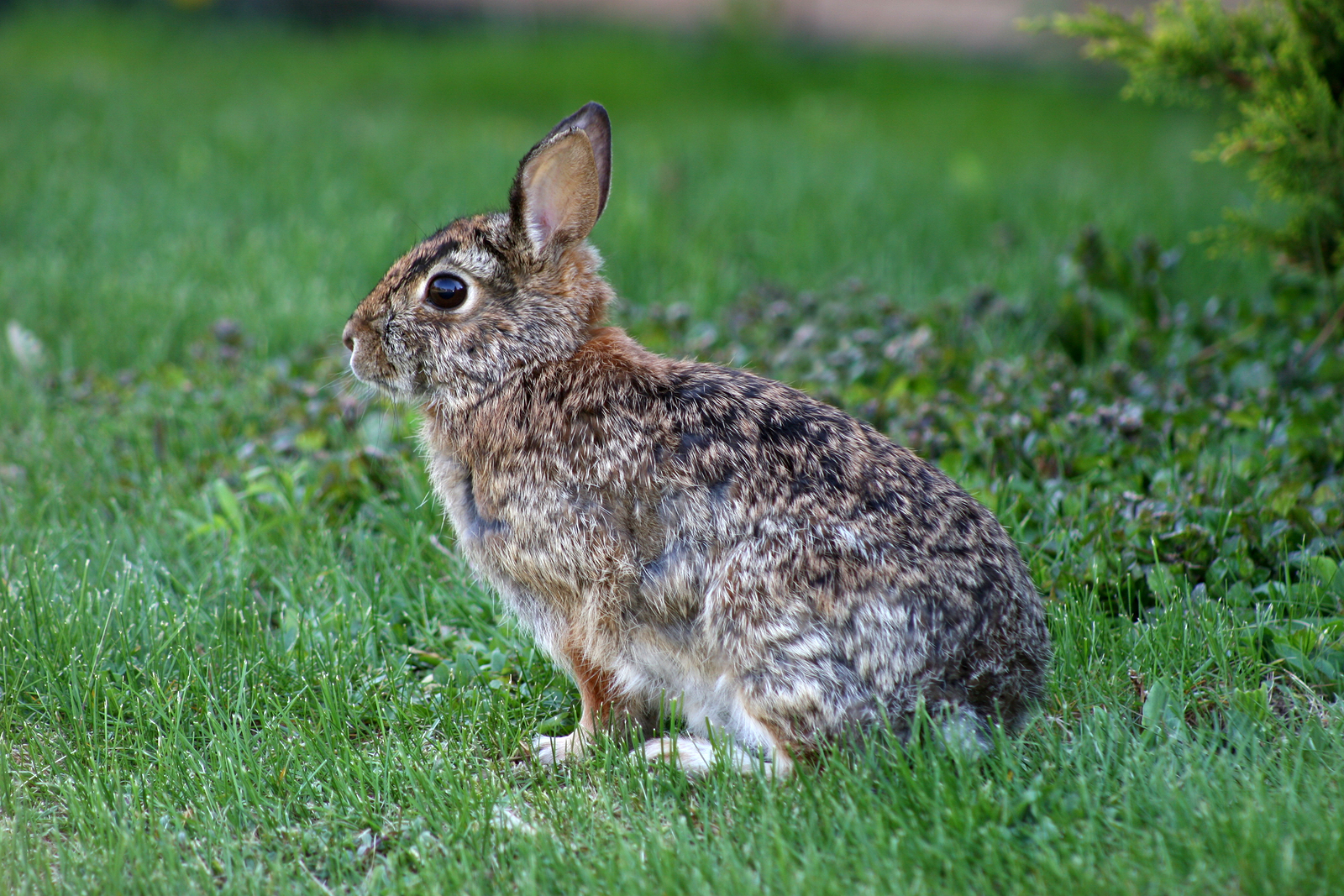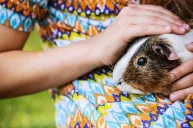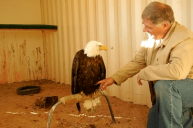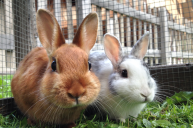It's spring, which means in addition to flowers blooming and the ground thawing, it's baby animal season. One of the most common baby animals you'll find in your yard is a baby bunny. Maybe you found a nest of little ones when you were out mowing the lawn, maybe your dog brought you one as a present, or maybe your kids discovered the babies while out playing and are now begging you to let them keep the little fur balls.
Regardless of how they came to you, one thing is for sure: You should never try and keep a baby bunny to raise for yourself, says Laura Schultz, Ph.D., certified wildlife rehabber in northern Virginia and founder of the non-profit ReWild NoVa.
Despite how adorable those wild rabbits are or how much you might see your neighbors on social media posting about the baby bunny they "rescued" after the mother "abandoned them," wildlife is meant to stay wild. Young wild rabbits are hard to raise and quick to die when removed from their natural environment.
But if you find a wild rabbit, you should take a moment to check that it's not injured. Then, there's a right way to either get the bunny medical help or to release it back into the wild.
Why You Shouldn't Try and Keep a Baby Wild Rabbit
Baby bunnies (called kits) are very, very sensitive to stress. They can die from the flood of adrenaline damaging their organs. As such, they aren't equipped to cope with stressful environmental conditions, and anything outside of their natural outdoor environment is stressful.
If you try to bring a baby inside and nurse it back to health, chances are that your efforts will be for naught and the baby bunny will die while in your care. That's heartbreaking.
What's more, oftentimes people think a baby has been abandoned when the mom is actually just away from the nest. In fact, it's quite rare to find a mother rabbit with her nest of babies during the day. Instead, mother rabbits lures predators away during the day and then visits the nest intermittently during the night or in the early morning, and only for a few minutes at a time to quickly nurse the kits. If you don't see a mother rabbit near the nest, don't assume that the kits are abandoned.
The good news is that a great many of the baby rabbits that people find are already big enough to get along without your help, and thus have a better chance of survival with zero human intervention.
What to Do If You Find a Baby Bunny
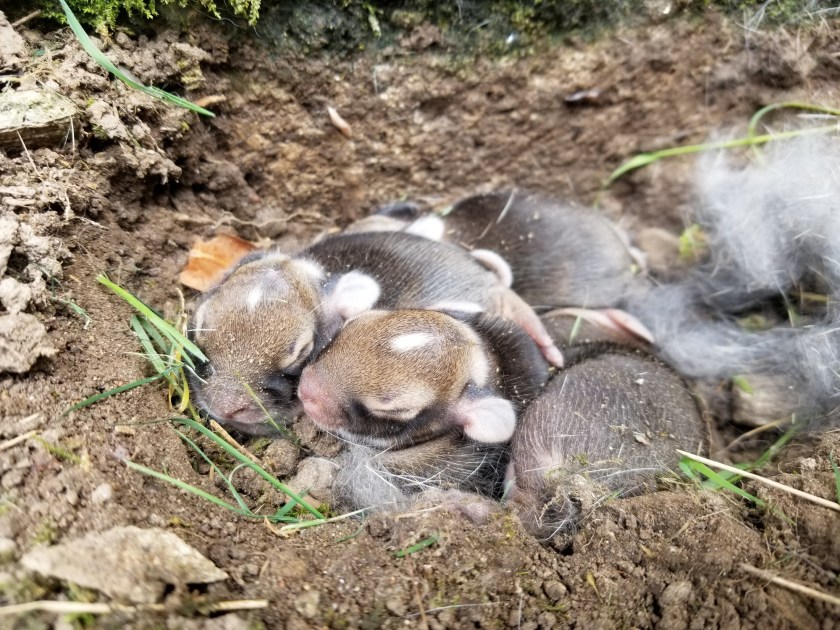
Getty Images, Photogirl
Step 1: The first thing you want to do is check if the bunny is visibly injured, sick, or if it's been in your pets mouth. Don't worry—that idea that a mother will abandon its baby if it can smell human touch on its little one is false, Schultz says.
If the bunny is injured, you should call your local vet or rehabber (more on that in a minute).
Step 2: If the bunny is fine, just alone, you want to figure out how old it is.
If the bunny's ears are up, it's skittish, furry, and about the side of a softball or bigger, you've found a juvenile and it doesn't need your help—it's old enough to survive on its own, Schultz says.
A proper baby bunny (as in, days old) is helpless if actually abandoned. This stage of the baby will have smooth fur, flat ears, and their eyes might be closed. If this is the case, don't try to give it food or water, she instructs.
Step 3: If you have a days-old baby bunny, you need to return it to its nest. This is important: Don't ever leave the bunny anywhere but in the nest, Schultz warns. "Babies have no scent so the mom can't find them if they're left anywhere but where she left them."
The nest is usually a small divet in the ground that'll have fluff of mom's fur in it or around it (see image above). If the nest is damaged, you can repair it by digging it out a little more or putting the fur back in—just don't move the nest, Schultz advises.
One note: If your dog uncovered the baby bunny, then try covering the nest with a latticed laundry basket or upside down wheelbarrow—something the mom can still slip through but your pup can't, Schultz advises.
If you can't find its nest or the nest has been destroyed, call your local vet or rehabber.
Step 4: Once it's back in its nest, you do want to make sure the mother is indeed coming back and caring for the baby. To do this, Schultz advises laying string, twigs, or even a ring of baking flour around the nest. Then, leave the bunnies. Come back and check on it after one dusk and one dawn, which is when the mother will come back to feed the baby. If the flour hasn't been disturbed after two feedings, call your local vet or rehabber. But if it has, mom has everything under control.
What to Do If the Baby Bunny Is Injured
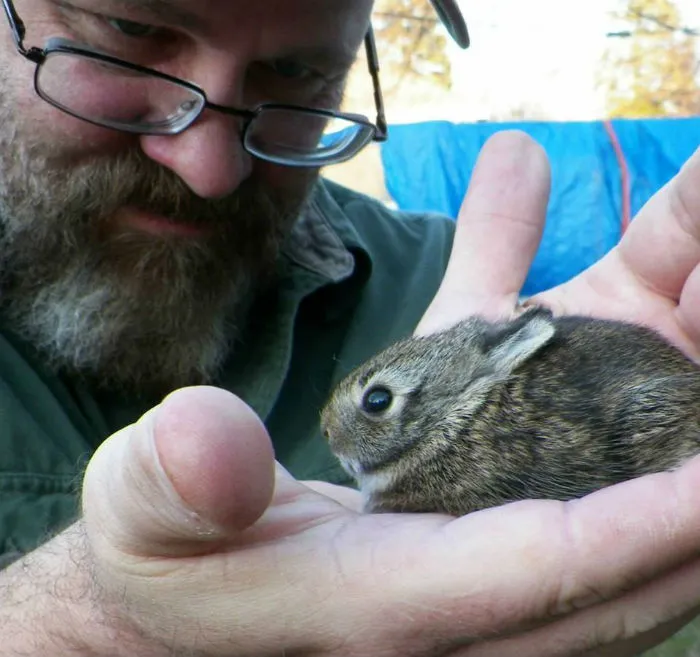
David Smith, holding a juvenile bunny his dog found in the yard.
Regardless of its age, if the bunny you've found is visibly injured or if your dog brought it to you in its mouth (so there could be injuries you can't see), you should call your local vet. The vet will treat the animal as they see fit and then pass it off to a rehabber they trust.
If the vet is closed, you can call your local wildlife rehabber. These are certified volunteers who will nurse the animal back to health before releasing it back into the wild.
Many states list the contact numbers for your local wildlife rehabber online (check out the Humane Society's directory here.)

Why a Wildlife Rehabber Can Raise the Baby But Not You
Like we said, baby wildlife of every kind is very fragile and sensitive to its environment and food. To raise a baby bunny inside, you have to be aware of the right temperature, cleanliness, handling, what to feed, what not to feed, when to feed, how much to feed, watering, dealing with illness, when to release, how to release, where to release, and a host of other considerations.
Certified wildlife rehabbers have the knowledge and training of all of this.
And, don't think you'll be able to make the rabbit a pet. Besides being illegal, it won't work out. If you want a pet rabbit then purchase a domestic rabbit breed to be a pet. You and the rabbit will be happier.
